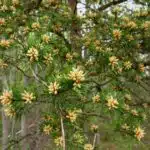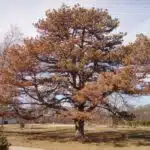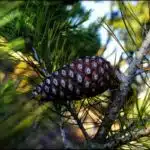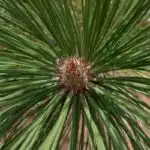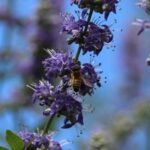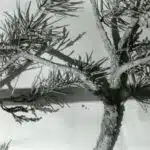Have you ever wanted to bring some of the beauty and majesty of a tropical forest into your home? If so, growing Norfolk Island pine is an ideal way to do just that. This attractive and easy-to-care-for plant is perfect for adding a touch of nature’s beauty to the inside of your home. But how do you get started? And what type of care does it require?
In this article, we’ll reveal all the secrets behind growing Norfolk Island pines indoors. We’ll share with you tips on how to get them off to the best start possible, and provide advice on how to keep them looking lush and healthy over time. You’ll be amazed at how simple it can be to successfully grow these beautiful trees in your own home!
So if you want to create an oasis of calm and tranquillity right in your own living room, read on and learn everything you need to know about caring for Norfolk Island pines. With our guidance, you’ll soon have a thriving mini-forest that will turn heads!
Where To Buy A Norfolk Island Pine
When you’re looking to buy a Norfolk Island pine, you want to make sure you get the right one. You don’t want to end up with a plant that won’t thrive in your home. There are a few things to consider when making your purchase.
First of all, look for a healthy specimen. It should have strong, unwilted needles and plenty of new growth. The plant should also be free from pests or diseases. If the pot is full of roots, then it’s probably an older tree and may not do as well in your home environment.
In addition, check the size of the plant. You want one that is not too small for its pot or too large for yours. This will help ensure that it gets enough light and has enough room to grow properly. And lastly, if you’re considering buying a Norfolk Island pine online, make sure it’s packaged securely so it arrives in good condition after shipping.
With these tips in mind, you can find the perfect Norfolk Island pine for your home and give it the best chance of thriving!
Choosing The Right Pot For Your Plant
When you are ready to bring a Norfolk Island Pine into your home, the second step is choosing the right pot for your plant. The pot should be large enough to accommodate your plant’s root system and it should have good drainage. For a small Norfolk Island Pine, a 6-inch pot will do just fine. Here are three tips to help you choose the best pot for your Norfolk Island Pine:
First, pick out a pot in which the root ball of your plant fits comfortably with room to spare. This will give your plant plenty of space to grow and develop healthy roots. Second, make sure that the pot has drainage holes in the bottom so that excess water can escape easily. If there isn’t one already present, consider drilling several holes in the bottom of the container yourself. Third, select a lightweight material such as plastic or ceramic which makes it easy for you to move around if needed.
By following these simple tips, you can give your Norfolk Island Pine an ideal home with all the necessary care and attention it needs to stay healthy and thrive indoors. Now that you have selected an appropriate container for your plant, let’s look at what kind of water requirements this type of pine tree needs.
Water Requirements For Norfolk Island Pine
Norfolk Island pine, or Araucaria heterophylla, is a distinctive evergreen that grows slowly up to 40 feet tall and 10 feet wide. This makes it a popular choice for home decor due to its manageable size and elegant appearance. Watering your Norfolk Island Pine correctly is an important part of keeping it healthy.
The right amount of water for your Norfolk Island Pine depends on the time of year and the potting mix you use. During the growing season, which runs from March through August, water your plant once per week, allowing the soil to dry out between waterings. In winter, reduce this to once every two weeks. If there’s a lot of humidity in the air, you can actually skip watering altogether during this period.
Be sure to check your potting mix regularly and adjust accordingly; if it’s too moist or too dry, your plant may suffer from root rot or dehydration. To test moisture levels, stick your finger about an inch into the soil and if it feels dry, it’s time for another watering session! With proper care and attention, you’ll be sure to keep your Norfolk Island Pine looking vibrant and healthy all year round.
Light Requirements For Norfolk Island Pine
As with any houseplant, the light requirements for Norfolk Island pine are essential for its healthy growth. To truly dazzle, this species of evergreen tree must be exposed to ample sunlight. Here’s what you need to know about ensuring an optimal light environment for your Norfolk Island pine.
Surprisingly, this type of tree enjoys a bit of direct morning sun. Just be sure not to overexpose it – no more than an hour of direct sunlight is recommended. If you feel the need to move it from place to place in order to get the best lighting available, make sure that you move it gradually so that it can adjust and avoid any shock.
Indirect sunlight is also great for your Norfolk Island pine; put it close enough near a window or patio door that allows its foliage to bask in the natural light. Doing so will contribute greatly to its lush and bright green coloration!
Providing your Norfolk Island pine with enough light will ensure that its branches do not become leggy or sparse over time; all these tips are key components of caring for this beautiful evergreen variety! Now let’s take a closer look at temperature requirements for Norfolk Island pine – an equally important factor in successful indoor gardening.
Temperature Requirements For Norfolk Island Pine
Nipping the problem in the bud, temperature requirements are one of the most important factors to consider when growing and caring for a Norfolk Island pine. The success or failure of this evergreen depends on its ability to stay within the right range of temperatures. With that in mind, here are some top tips:
Make sure your Norfolk Island pine is not exposed to temperatures lower than 50 degrees Fahrenheit, as this can cause it to become stressed and weakened.
Provide plenty of humidity around your plant as it needs a humid environment to stay healthy. A simple way to do this is by misting it with water every few days.
Avoid placing your Norfolk Island pine near air vents, radiators, or other sources of heat as these can cause it to become too warm.
All in all, understanding and meeting temperature requirements for Norfolk Island pines will help ensure their health and longevity. To further ensure its well-being, you’ll need to consider fertilizer requirements next.
Fertilizer Requirements For Norfolk Island Pine
Fertilizing your Norfolk Island Pine is an important part of its growth and health. After all, it needs the right nutrients to properly thrive indoors! Thankfully, fertilizing isn’t too difficult. Here’s what you need to know to keep your Norfolk Island Pine in top condition:
First off, it’s important to understand that Norfolk Island Pine is a slow-growing coniferous tree. That means they don’t require frequent feeding; once every three months should do the trick. Secondly, you’ll need to pick a fertilizer specifically designed for conifers or slow-growing plants. Thirdly, you should mix it into the soil at about half strength or less than what is recommended on the bottle. Finally, avoid fertilizing during winter since this is when your plant enters its dormant period and won’t be using much fertilizer anyway.
Using these tips as a guideline can help ensure your Norfolk Island Pine gets just the right amount of nutrients it needs without overfeeding. As with anything else in life, moderation is key – too much fertilizer can burn the roots and damage your plant beyond repair! To make sure you’re providing just enough nutrition for healthy growth without overdoing it, here’s a helpful list:
• Pick a fertilizer specifically designed for conifers or slow-growing plants • Mix at half strength (or less) than what’s recommended on the bottle • Fertilize only once every three months • Avoid fertilizing during winter
By following these steps and guidelines, you’ll be able to keep your Norfolk Island Pine healthy and growing strong with just enough nutrition. And as we move onto pruning and training your norfolk island pine next, remember that while it may take some time and effort now; caring for your indoor tree will pay off in dividends later!
Pruning And Training Your Norfolk Island Pine
Pruning and training your Norfolk Island pine is an important step in keeping it healthy and looking great. By pruning regularly to shape the tree, you can create a aesthetically pleasing look for your home or office. But, it’s also essential to understand how much and when to trim for optimal growth. Here are some tips to help you get started:
- Prune the Norfolk Island pine once a year in early spring for best results.
- Remove any dead branches or yellow or brown needles from the tree’s interior.
- Always use sharp, clean pruners when trimming the tree.
- Use thinning cuts if you want to remove entire branches, as this will help maintain an even canopy shape.
- Take care not to over-prune, as this can limit the amount of new growth produced each year.
As with most plants, pruning and training your Norfolk Island pine should be done with care so that you don’t damage the plant or inhibit its growth potential. A little bit of time spent on regular maintenance will go a long way towards keeping your pine happy and healthy! With that said, it’s time to move onto another important aspect of caring for your Norfolk Island Pine – repotting!
Repotting Norfolk Island Pine
Repotting a Norfolk Island pine is like performing a complex dance routine. It can be tricky, but with the right steps, you can help your plant thrive. There are three main elements to keep in mind when repotting: soil type, pot size, and drainage.
When it comes to soil type, it’s important to use a blend that is rich in organic matter and drains well. Good options include peat moss or a mix of perlite and vermiculite. When selecting a pot size, pick something slightly bigger than the existing pot so that your Norfolk Island pine has room to grow. Be sure to provide plenty of drainage holes in the bottom for water to escape.
Finally, when it comes time to repot your Norfolk Island pine, remember to handle the plant gently and loosen any roots that may have become bound up over time. This will help ensure that your plant has enough space for its root system to grow in its new home. With these tips and tricks in mind, you can easily repot your Norfolk Island pine—dance routine complete!
Next up? Propagating Norfolk Island pine by air layering or seed propagation!
Propagating Norfolk Island Pine
Propagating Norfolk Island Pine is an excellent way to add new life to your home. Did you know that a single stem can produce up to 300 branches, making them the perfect addition to any indoor garden? Here’s how you can propagate your own Norfolk Island Pine:
• Propagation by Cuttings: This method is best used when propagating mature plants with thick stems. Make sure to take the cutting from the base of the plant and use a sharp knife or pruning shears. Plant it in a moist soil mix and water lightly until roots form.
• Propagation by Air-Layering: This method is best for younger plants with thin stems. Create an air-layer by making a shallow cut near the base of the stem and then wrap some damp sphagnum moss around it, securing it with twine or tape. Water occasionally until roots start to form and then remove from mother plant and repot in fresh potting mix.
Propagating Norfolk Island Pine is a great way to add some natural beauty to your home while also boosting your green thumb skills! There’s no greater feeling than seeing something grow from your own efforts – so why not give it a try?
Diseases And Pests Of Norfolk Island Pine
Norfolk Island pine, or Araucaria heterophylla, is a beautiful evergreen that’s beloved by many. But unfortunately, these trees also come with their fair share of problems – such as diseases and pests. In fact, statistics show that up to 80% of Norfolk Island pine trees experience some form of infestation during their lifetime.
To help you keep your Norfolk Island pine healthy and strong, here’s an overview of the most common pests and diseases:
• Pests: o Aphids: These small insects suck the sap out of the leaves and stems, causing discoloration and deformation. o Mites: These tiny arachnids feed off the underlying tissue on the leaves, leaving behind yellow spots. o Scale Insects: These hard-shelled bugs attach themselves to branches and feed off sap from the tree.
• Diseases: o Root Rot: This fungal infection attacks the roots of the tree and can lead to stunted growth or even death if left untreated. o Canker Disease: This bacterial disease causes lesions on branches or trunks that can spread quickly throughout an affected tree if not caught in time. o Blight: Fungal spores cause this condition which leads to brown patches on leaves and eventually affects the entire plant’s foliage.
Fortunately, there are ways to both prevent these issues from occurring in your Norfolk Island Pine as well as treating them when they do happen. By understanding what to look for, you’ll be able to take steps towards keeping your tree healthy for years to come.
Controlling Growth Of Norfolk Island Pine
Coincidentally, Norfolk Island pine is a versatile tree that can be used to decorate any modern home. But while it’s a popular decorative plant, it can grow more quickly than some expect. Controlling the growth of this evergreen is essential in order to maintain its beauty and keep it healthy.
First, when potting your Norfolk Island pine, make sure you choose one that fits its root system. If the pot is too large, it can cause the roots to expand and stunt their growth. Additionally, consider trimming back any branches that are growing too long or too quickly. This will help control the overall size of the tree while also keeping it looking neat and attractive.
Second, be sure to provide your Norfolk Island pine with adequate light and warmth. While these trees prefer bright areas, they should not be placed in direct sunlight for extended periods of time as this can cause leaf damage and scorch marks on the needles. It’s also important to keep them away from drafts or cold air sources that could damage their leaves or stunt their growth rate.
Finally, regular watering is key for proper care of your Norfolk Island pine. Watering once every week or two should suffice if you’re using well-draining soil; however, if your soil is more compacted you may need to water more frequently in order to prevent root rot or other issues related to dehydration. With a bit of effort and dedication, you’ll soon have a beautiful Norfolk Island Pine that will bring life into any room!
Decorating With Norfolk Island Pine
Decorating with Norfolk Island Pine is an interesting way to bring a tropical feel into your home. It’s an evergreen conifer tree, so it can retain its shape and stay green all year round. This makes it an ideal choice for decorating since you don’t have to worry about it losing its color or shape over time. One statistic to note is that the Norfolk Island Pine can be found in climates from 40°F up to 80°F.
When decorating with this type of pine, you can use the branches as a backdrop for pictures or holiday decorations, or you can hang lights from them to give your home a festive look. You can also wrap garlands around the tree for a unique look that adds texture and depth to your space.
TIP: Be sure not to over-decorate the Norfolk Island Pine as too much decoration can block out light and prevent the tree from getting enough air circulation. Instead, opt for small decorations that won’t overwhelm the tree, such as small ribbons or strands of beads. This will help ensure your tree remains healthy while still looking festive and beautiful!
Best Uses For Norfolk Island Pine Indoors
Norfolk Island Pine is a beautiful, ornamental plant that can bring life to your home or office space. It’s easy to take care of and can survive in low light conditions. However, the best uses for this pine indoors is for decorations and special occasions.
When choosing how to decorate with your Norfolk Island Pine, there are a few tips you should follow. First, be sure to place it in an area where it will receive enough sunlight and water. Also, be mindful of the size of the pot you use as this tree can get quite large over time. Finally, consider adding decorations like ribbons or bows during special occasions such as holidays or birthdays. Being creative with your decorations will make your Norfolk Island Pine look even more vibrant and alive!
Norfolk Island Pine makes for a great addition to any living space by bringing a touch of nature inside. With proper care and attention, this tree can last for years while being a stunning piece of decoration during special events. Now that you know more about best uses for Norfolk Island Pine indoors, it’s time to turn our attention to the potential dangers associated with these trees…
Dangers Of Norfolk Island Pine
Have you ever wondered what dangers a Norfolk Island Pine may pose? While this beautiful tree is known for its stunning, symmetrical shape and lush foliage, it can also be hazardous if not properly cared for. In this article, we’ll explore the risks associated with growing a Norfolk Island Pine indoors and provide tips on how to keep your tree healthy.
Most of the risks associated with keeping a Norfolk Island Pine indoors are related to its size. These trees can reach heights of up to 10 feet tall in their natural environment and even smaller specimens can grow too large for an indoor space if not pruned regularly. Additionally, these trees have shallow root systems that don’t do well in containers or in soil that drains too quickly. If the soil becomes too dry or the roots become root-bound, it can cause damage to the tree as well as potential hazards from falling branches.
Norfolk Island Pines are also vulnerable to pests like spider mites, mealy bugs, and scale insects which can weaken its structure over time. If left untreated, these infestations can lead to an unhealthy tree that may require more aggressive treatments such as systemic insecticides or even complete removal of the tree. Finally, these trees should be kept away from open windows where they could be exposed to cold drafts which could cause leaf drop and reduce their lifespan significantly.
Taking proper care of your Norfolk Island Pine is essential not only for its health but also for safety’s sake. To ensure your tree stays healthy and strong, make sure it has access to plenty of bright indirect light and a potting mix with good drainage properties so it doesn’t become waterlogged. Additionally, check for signs of pests regularly and take steps to prevent them from taking hold of your plant. With regular pruning and attention, you can enjoy your Norfolk Island Pine indoors safely for many years to come!
Tips For Keeping Your Norfolk Island Pine Healthy
Keeping your Norfolk Island pine healthy is essential for its long-term health and growth. It’s not difficult to achieve, but it does require some attention to detail and regular maintenance. In this article, we’ll provide you with some essential tips to keep your Norfolk Island pine looking lush and green.
Firstly, it’s important to provide the right environment for your Norfolk Island pine. This includes choosing a warm, bright spot indoors, away from drafts or any other sources of cold air. The soil must be well drained yet moist, and fertilization should take place every two weeks during the growing season. Additionally, misting the foliage on a regular basis will help maintain humidity levels around the plant.
Secondly, pruning is an important part of keeping your Norfolk Island pine in shape. You can remove dead or dying branches by cutting them back to the main stem of the tree. You should also trim off any new shoots that grow outwards from the base of the tree so that it maintains its conical shape. Lastly, don’t forget about repotting – make sure to transfer your Norfolk Island pine into a larger container when it becomes root-bound in order to give it plenty of room for growth!
By following these simple tips you can ensure that your Norfolk Island pine stays healthy and looks its best all year round! With regular care and attention, you can ensure that your plant continues to thrive and bring years of enjoyment.
Frequently Asked Questions
Is Norfolk Island Pine Toxic To Pets Or Children?
Norfolk Island Pine is an evergreen tree native to the island of Norfolk in Australia. This majestic conifer has become a popular houseplant for its ability to grow indoors with proper care and attention. But, before you bring this lovely plant into your home, there are a few things you should consider – namely, whether or not it is toxic to children and pets.
To answer this question, let’s take a look at the facts: While Norfolk Island Pines are generally nontoxic, they can cause mild stomach discomfort if eaten by children or pets. To avoid any health issues, here’s what you should do:
• Keep all parts of the plant away from small children and pets. • Do not allow them to chew on the leaves, needles, or bark of the tree as it can cause an upset stomach. • Wash your hands after handling the plant to prevent any contact with skin or eyes. • If ingested by either a child or pet consult a physician immediately.
The truth is that Norfolk Island Pine may not be as dangerous as some other houseplants; however, it still carries potential health risks which should be taken seriously. As long as you take the necessary precautions and follow these simple guidelines, there’s no reason why you can’t enjoy this beautiful plant in your home!
How Often Should I Water My Norfolk Island Pine?
A Norfolk Island Pine is a captivating specimen of a houseplant, capable of transforming any interior into an awe-inspiring tropical paradise. It’s no wonder why these majestic trees are so popular; they provide the perfect balance between low-maintenance care and stunning beauty. But even with its forgiving nature, caring for a Norfolk Island Pine still requires attention to its specific needs, especially when it comes to watering.
Watering your Norfolk Island Pine is one of the most important aspects of its care routine. The frequency at which you should water this majestic tree depends on several factors such as temperature, lighting, size, and soil moisture levels. Generally speaking, you should check the soil moisture level once every week or two and water your tree whenever it looks dry on top. You’ll want to give your tree enough water until the excess starts draining out from the bottom of the pot.
It’s important not to overwater your plant as too much water can cause root rot and other issues that can lead to its demise. To prevent this from happening, make sure that you’re not overdoing it by always checking the soil before supplying more water. If you stick to a regular watering schedule and take note of things like temperature and lighting levels, then your Norfolk Island Pine will be happy for years to come!
How Do I Know If My Norfolk Island Pine Is Getting Enough Light?
Light is one of the most important factors in caring for a Norfolk Island pine. Without enough light, the tree may become weak and its leaves may begin to yellow or drop off. All too often, we see Norfolk Island pines living in dimly lit rooms, with only pale sunlight coming through the window. But that’s not enough for this special tree to thrive.
Alluding to the phrase ‘you are what you eat’, it could be said that ‘you are where you stand’. A Norfolk Island pine needs more than just food and water; it needs the right environment to truly flourish. It should be placed close to a south-facing window, where it can get plenty of bright light each day – but be sure not to place it directly in the sun, as this could scorch its needles.
By monitoring your tree’s growth and overall condition, you’ll soon be able to tell if it’s getting the amount of light it needs. If its foliage is bright green and healthy-looking, then you know your efforts have been successful! If its leaves start turning yellow or brown, then try moving it closer to a window or perhaps invest in some artificial lighting for extra brightness. With just a few simple steps, you can help your Norfolk Island pine stay strong and healthy – so don’t neglect this aspect of caring for your plant.
How Often Should I Fertilize My Norfolk Island Pine?
The Norfolk Island Pine is a unique and special plant, much like an old seafaring sailor with its tall stature and green spines. It is important to care for this majestic tree properly in order to ensure it grows strong and healthy. One of the most important aspects of caring for a Norfolk Island Pine is fertilizing it regularly.
Fertilizing your Norfolk Island Pine can be likened to providing sustenance to an ancestral figure, ensuring that generations of knowledge stay alive and vibrant. Just as food provides nourishment to our bodies, so too does fertilizer provide essential nutrients for your plant’s growth. Fertilizing your tree every four weeks will allow it to absorb the necessary minerals and elements that it needs for healthy growth. When shopping for fertilizer, look for one specifically designed for indoor plants such as the Norfolk Island Pine – these often contain all the necessary ingredients needed for optimal growth in one easy solution.
When fertilizing your Norfolk Island Pine, make sure you follow the instructions on the package carefully. Be sure not to over-fertilize as this can lead to root burn or cause damage to the leaves of your tree. Additionally, make sure you don’t fertilize too often – once every four weeks will suffice! With proper care and attention, you can ensure that your Norfolk Island Pine remains healthy and strong while growing into its full potential.
How Do I Propagate My Norfolk Island Pine?
Propagating your Norfolk Island Pine is a great way to ensure that your beloved plant continues to thrive for years to come. It’s a simple process, but one that requires careful attention and regular care. With our guide, you can easily propagate your Norfolk Island Pine and enjoy the beauty of this unique evergreen.
To start propagating your Norfolk Island Pine, you’ll need to gather some supplies first. You’ll need a potting mix that is specifically designed for conifers, as well as some rooting hormone powder. You’ll also need a pair of scissors or gardening snips and some plastic pots or trays with drainage holes in the bottom. Once you have all of your supplies ready, it’s time to get started!
Begin by taking small stem cuttings from the tips of the branches on your Norfolk Island Pine. Cut them off just above where they join the branch and try to make sure that each cutting has at least two pairs of leaves on it. Dip the end of each cutting into the rooting hormone powder and then place them into small holes in the potting mix you prepared earlier. Make sure that each cutting is firmly placed in the medium so it won’t move around. Keep an eye on your cuttings over the next few weeks and be sure to water them regularly so they don’t dry out while they take root.
When your cuttings have taken root and are stable enough to handle, slowly transfer them into individual pots or trays filled with fresh potting soil. Place them in a warm, sunny spot indoors near a window and continue caring for them until they have established themselves as healthy new plants! With patience and regular care, you will be able to enjoy more beautiful Norfolk Island Pines for many years to come!
Conclusion
Norfolk Island Pine is an attractive and unique houseplant that can bring a touch of the outdoors into your home. Although it may seem daunting to care for, with regular watering, fertilizing, and exposure to light, you can easily keep your Norfolk Island Pine healthy and happy.
Some people may think that caring for a Norfolk Island Pine is too much work or worry that it might not thrive in their home environment. However, with the right care, you will be rewarded with a beautiful and graceful addition to your home. Plus, as long as you keep the plant away from pets and children who could try to eat it, there should be no reason to worry about potential toxicity.
In conclusion, taking care of a Norfolk Island Pine doesn’t have to be difficult or intimidating. With some simple steps such as providing adequate light and water and propagating when necessary, you can create a wonderful indoor space filled with natural beauty. You won’t regret bringing this unique plant into your home—it will enrich your life for many years to come!






